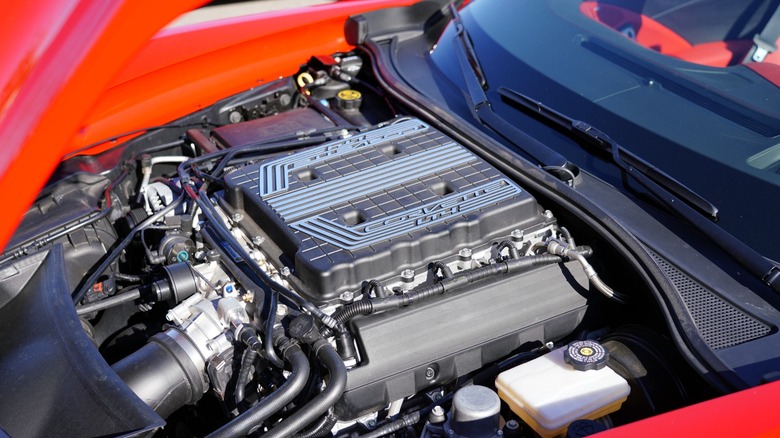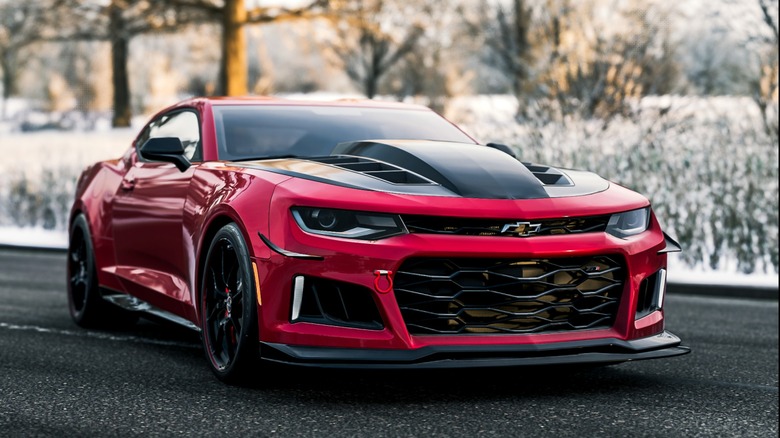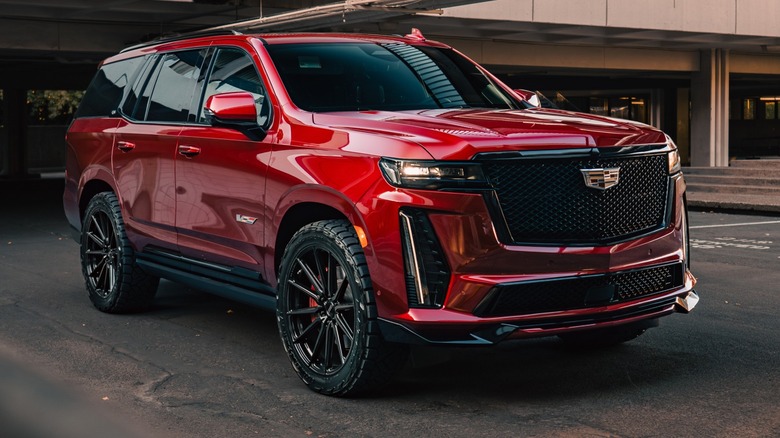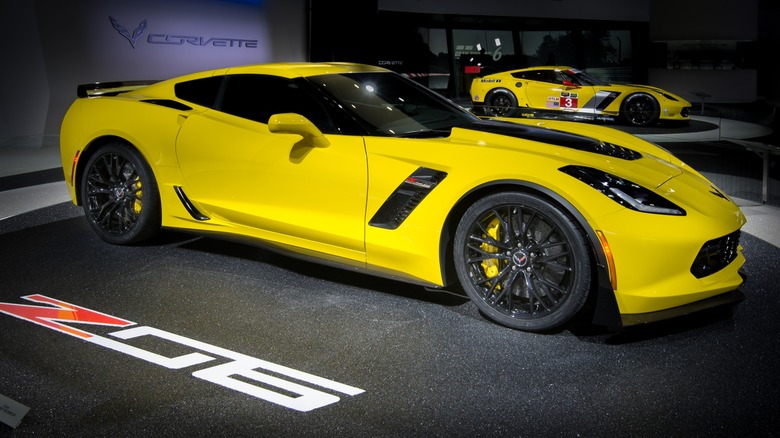GM's LT4 Vs. LSA Engine: What's The Difference & Which Is Better For Your Needs?
The first difference that stands out between the LSA and LT4 General Motors engines is that the first is obviously an LS, while the latter is an LT. While being of two distinct small block engine generations is a primary difference between LS and LT engines, they share some similarities as GM strives to keep the desirable aspects of its long-running LS small block while improving upon it.
The popularity of LS engine swaps isn't exactly a secret among hotrodders, as evidenced by the plethora of LS engine swap kits and supplies available online. However, like its LS9 counterpart, LSA crate engines — along with suitable junkyard specimens — are becoming more difficult to source, while the LT4 is still available from Chevrolet. Performance wise, there isn't a lot of difference between the LT4 and LS9, making the LT4 the easy choice as long as it fits in your budget.
Comparing the LSA and LT4 provides a wider gap in price and performance. Although the LSA small block is discontinued from Chevrolet, it's available from other suppliers and donor cars in salvage yards across the nation.
What do GM's LT4 and LSA engines have in common?
The LT4 and LSA engines from General Motors are both supercharged V8 engines with 6.2-liters of displacement. As different generations of small block engine, the LT4 replaced the LSA in various GM vehicles, but shares similar architecture: both have pushrod activated single cam two-valve-per-cylinder valve trains, and a 4.40-inch on-center cylinder bore spacing.
Much like the LSA carried on from the LS3, the LT4 shares a lineage with the LT1 fifth-generation small block. While the Gen IV LSA and Gen V LT4 come from different generations, they're both designed and built to perform — each serving time as the high performing power plants in General Motors' Cadillac CTS-V and Chevrolet Camaro ZL1.
Structurally sound aluminum engine blocks, free flowing aluminum cylinder heads, direct fuel injection, and forged powder steel connecting rods combine to deliver performance that transcends generations. Another aspect shared by both engines is the reliability of the GM small block design.
What's the difference between the LSA and LT4?
Availability is one big difference between the LSA and LT4 that could affect your decision when choosing a GM power plant. While LSA engines with matching transmission packages are still available at select suppliers, a new LT4 is available as a performance crate engine direct from Chevrolet, in addition to a larger variety of potential donor cars that have GM's LT4 engine under the hood.
Budget is another factor when deciding which engine to choose for your swap, and the difference in price between the LSA and LT4 options is considerable. For example, a wet-sump 650-horsepower LT4 with a 10L90-E automatic transmission from Karl Kustoms carries a sale price of $27,816.54. Compare that to the 556-horsepower LSA crate engine paired with a 6L80-E automatic transmission from Boost District, priced at $18,980.00.
The power output of the LSA and LT4 is another major difference. The LSA used in the 2012-2015 Chevrolet Camaro ZL1 had 556 horsepower and 551 pound-feet of torque. A more powerful LSA option was available in Cadillac CTS-V sedans, coupes, and wagons from 2008-2013 producing 580 horsepower and 556 pound-feet of torque.
LT4 power ratings include 640 horsepower and 630 pound-feet of torque in 2016-2019 Cadillac CTS-V sedans, 650 horsepower and 650 pound-feet of torque in 2015-2019 C7 Corvette Z06 and 2017-present Camaro ZL1 models, 668 horsepower and 659 pound-feet of torque in 2022-present Cadillac CT5-V Blackwings. As well, the engine outputs 682 horsepower and 653 pound-feet of torque in the 2023 and newer Cadillac Escalade-V.
Does the GM LSA or LT4 engine better fit your needs?
As pushrod based 6.2-liter GM small blocks, either engine — LSA or LT4 — will fit in essentially the same sized engine bay. They're also available as a "Connect & Cruise Powertrain System," which includes a complete engine, matching transmission, calibrated control systems, and wire harnesses designed to retrofit with older cars, according to Chevrolet's definition.
If you're trying to stay on any sort of sensible budget, even the GM LSA is likely to blow it, just not by as much as the LT4 option. However, both engines use quality components deemed worthy of GM's luxurious Cadillac brand, and the LT4 builds on that with its next-generation design. If your main goal is power, the LT4 wins out here even in stock form. It's also a better option for pushing beyond stock specs, as it has forged aluminum pistons and a 10.0:1 compression ratio compared to the LSA's cast aluminum pistons and 9.1:1 compression ratio.
Finally, the LT4's 1.7L Eaton R1740 TVS supercharger, in stock form, produces around nine pounds of boost. An easy upgrade that adds horsepower and torque to the LT4 is swapping the R1740 supercharger with a Magnuson TVS2560 supercharger. The TVS2560 supercharger provides up to 13 pounds of boost to deliver 726 horsepower and 690 pound-feet of torque, and the completed package still fits under the stock C7 Corvette Z06 hood.



